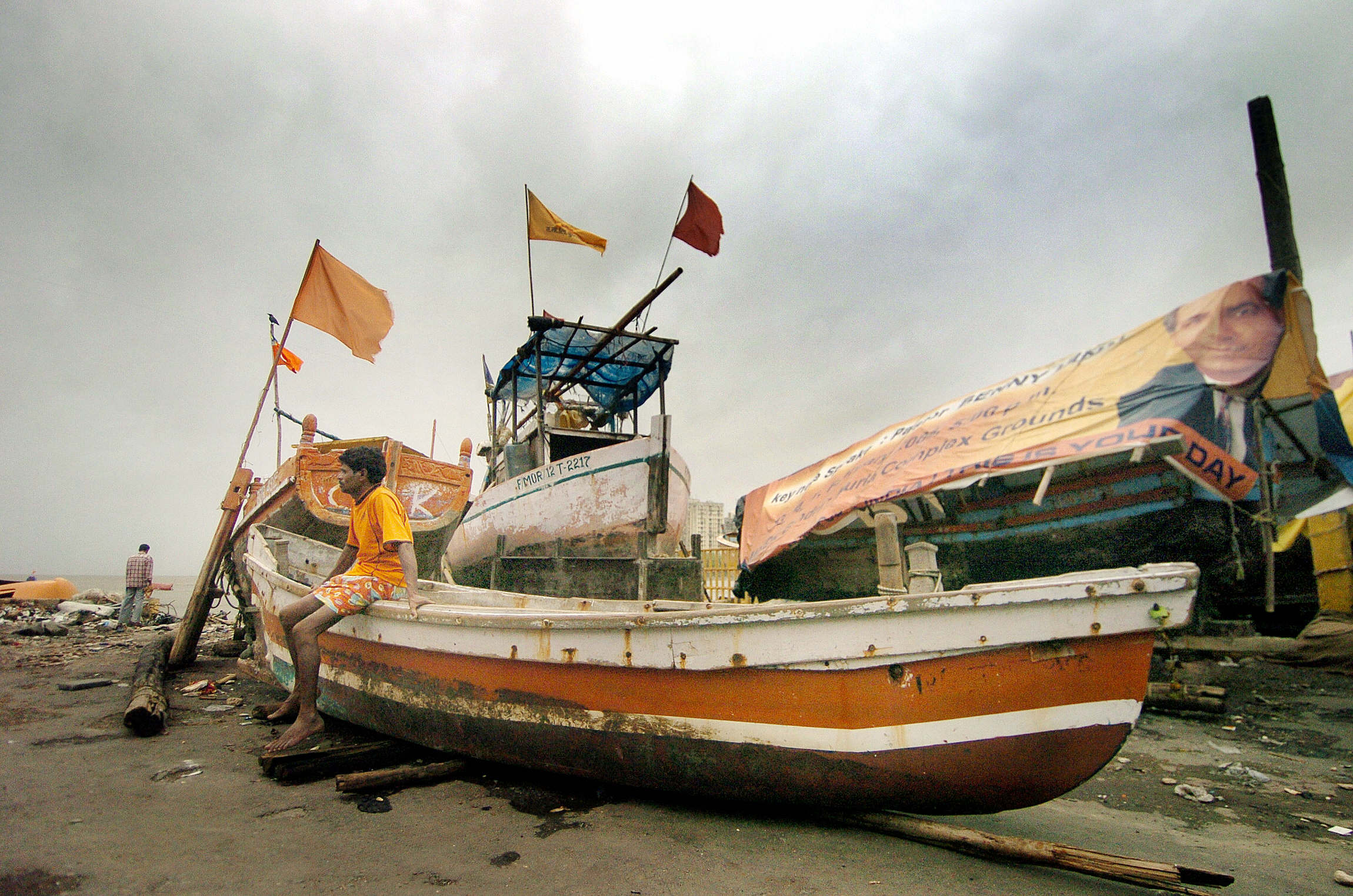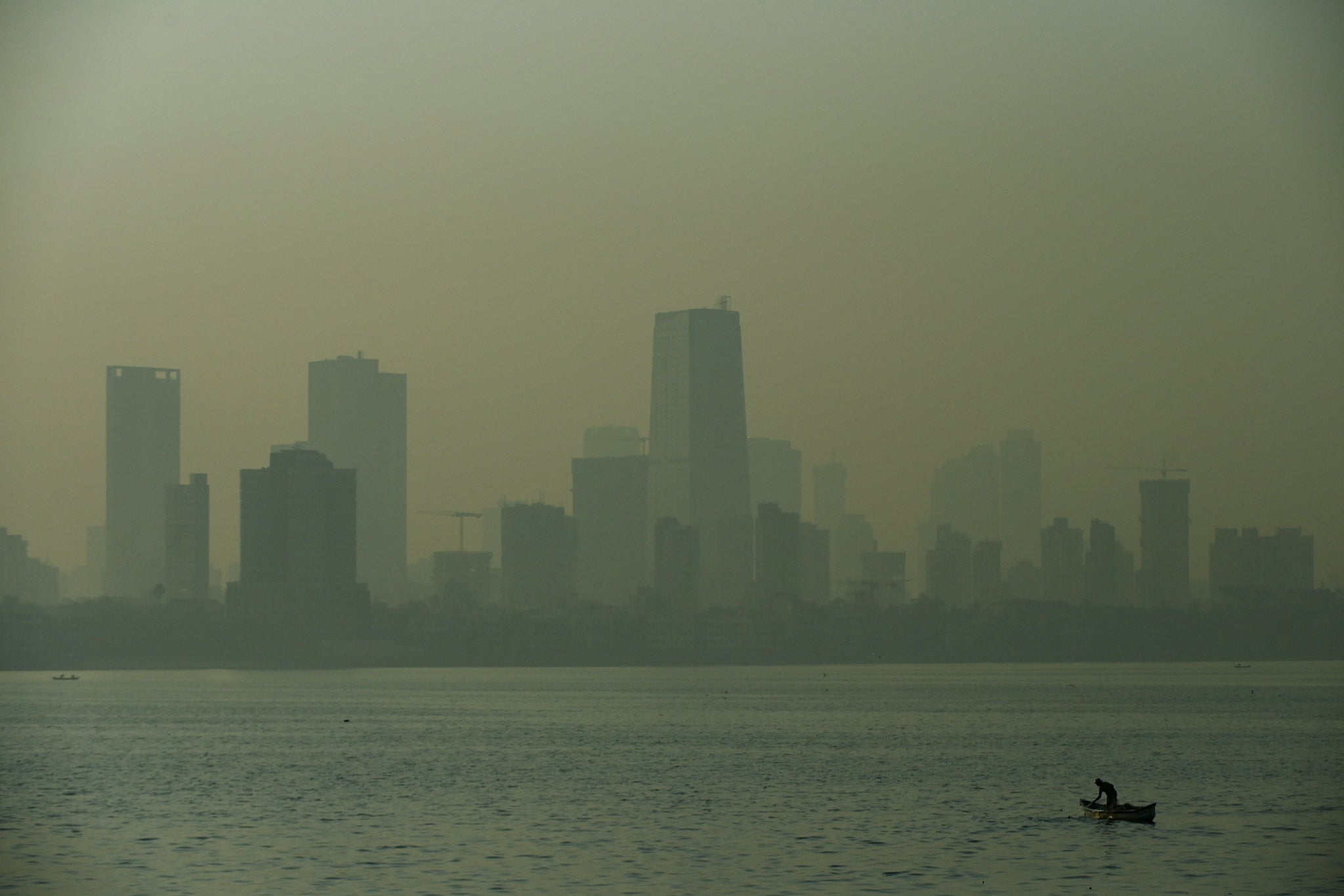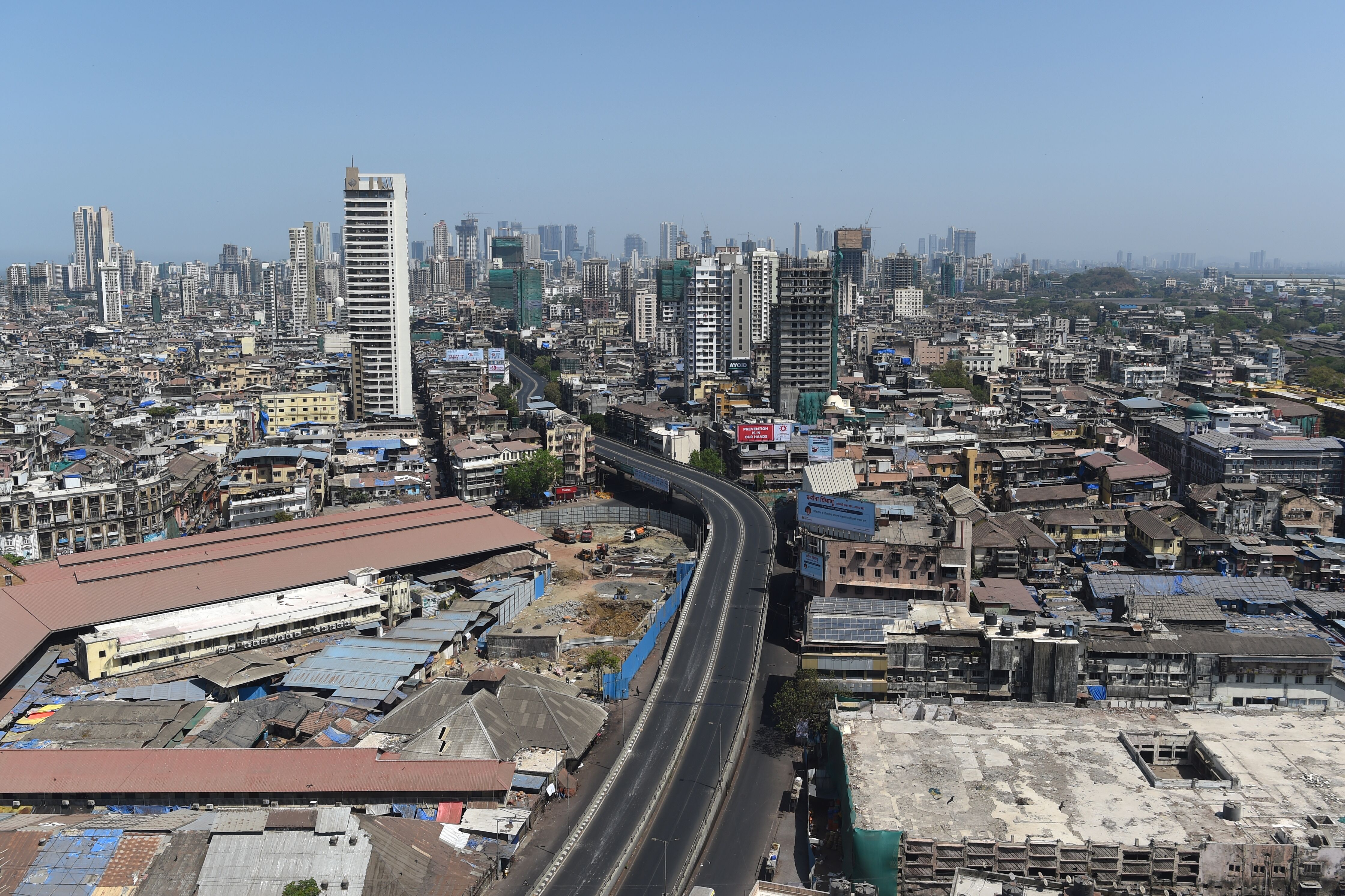What Mumbai’s net-zero pledge means for residents threatened by impending sea level rise
As Mumbai prepares a climate action plan looking forward to 2050, worsening heatwaves and a deadly monsoon season are already threatening the city’s most vulnerable population. Stuti Mishra reports


Ranjana Kumari, 51, says her tin roof in the crowded Oshiwara area of suburban Mumbai has been trapping heat inside her shack since the mercury soared to 40C in the middle of March – unseasonably early in the year – making her feel like she is “living in a chimney”.
“There is no ventilation in houses like ours, it is difficult to stay at home in this burning heat and it seems to be getting worse,” she says, adding that until she was forced to stay home by Covid lockdowns, she did not even own a fan.
The grandmother of four is not aware of the climate crisis, but she has heard how soaring heat, intense rainfall and rising sea levels are going to make the lives of her children even more difficult in the coming years, and she isn’t optimistic that action will be taken by political leaders to alleviate this. “Who thinks about us?” she asks.
For the last three weeks, Mumbai has been recording temperatures close to 40C, triggering a heatwave warning from the authorities as early as 15 March – highly unusual for this time of the year. Normal temperatures for March should be an average of 32C in Mumbai, but heatwaves in the coastal city have become more frequent in the last few years – and residents know worse is yet to come.
While extreme heatstroke can be deadly, it is the monsoon rain that represents the real threat to the millions of people in Mumbai like Kumari who live in shacks of tarp and tin in crowded slums. When it rains, her house fills with water that brings with it sludge from the outside, black mould down her walls, and mosquitos and other insects exposing her family of eight to a range of deadly vector-borne diseases.
The city receives an average of about 94 inches of rain annually, more than double London’s rainfall, and most of it arrives during the four-month rainy season. The densely populated city is home to some 20 million people, and a mix of some of South Asia’s biggest corporations and banks, its most expensive properties, and one of the world’s biggest slums. It faces chronic and severe infrastructural challenges that have been a deterrent in tackling frequent flooding, never mind the other extreme weather impacts of a warming planet.
Scientists have been warning for some time that Mumbai will only face mounting challenges, from unpredictable weather to worsening air quality and, above all, rising sea levels. Most of the coastal city, built by uniting seven islands, sits less than 10m above sea level, and according to a study by the Indian Meteorological Society, nearly 40 per cent of the city will be underwater within the next century if sea levels continue to rise at their current rate.
Mumbai has now declared an ambitious pledge – the aim to achieve net-zero carbon emissions by 2050 – two decades ahead of India’s national target. The Mumbai Climate Action Plan (MCAP) makes it South Asia’s first city to have a carbon neutrality target, and proposes an ambitious series of policies to get there, like a dramatic ramp-up of renewable energy, deep emissions cuts across its building and transportation sectors, and increasing green spaces.
The bold plan, announced by Maharashtra’s environment minister Aditya Thackeray, will require a complete change to the city’s infrastructure, putting Mumbai on a list of world cities like New York and London that are planning for a more resilient future.
“This MCAP is a bold step that does two very fundamental things. First, it aims to be more aggressive than the rest of the country, reaching net-zero by 2050. Second, there is a focus on sector improvements and accelerated actions, including a strong emphasis on adaptation,” says Dr Rahul Tongia, a senior fellow at the Energy Security and Climate Initiative at the Brookings Institution think-tank.
Climate experts have heralded Mumbai’s announcement in a country where, despite its huge vulnerabilities, climate change rarely gets a mention in the political sphere. But while the ambition is laudable, activists fear the plan fails to offer enough of an impact for the lives of millions of residents already facing deadly extreme weather events.
Brijesh Arya, an activist working with the city’s homeless slum population with his organisation, Pehchan India, says that barely a month before the heatwave warning Mumbai residents were struggling with unusually cold temperatures of around 12C or less, reaching for blankets.
“People hardly ever used blankets in Mumbai, but this was the first time in my memory that the temperatures dropped so low,” Mr Arya says. “There is a vicious cycle of extreme weather events and people in the city aren’t prepared for what’s to come.”
Mumbai has seen 13 heatwaves over the last 15 years and increasing floods have claimed more than 400 lives in the last decade.
“Like many bold plans, the process, intention, and signalling it provides is likely more valuable than specifics,” Dr Tongia says of the net-zero pledge. After the initial celebration, Mumbai “will need to change direction, and those changes will be more systemic than simply ones that can be dropped in”.
Like the rest of India, Mumbai has tough decisions to make – which can sometimes involve choosing between much-needed development and climate resilience. Reducing dependence on coal isn’t an easy way forward when the city still has more houses to provide electricity, for instance.

While projects for more solar panels and green transport are already underway in the city, creating more green cover is not something Mumbai excels in, with space coming at a premium. Making climate change a priority may also need the Maharashtra state government to take a second look at some of its more recent infrastructure projects.
One of the city’s biggest such cases is the Coastal Road Project, which finds mention in the latest IPCC report on climate change impacts as an example of “maladaptive” infrastructure. The report, put together by scientists and researchers worldwide, says it could have unintended negative consequences in the long term. While the coastal road could act as a barrier to sea-level rise, it could also cause damage to intertidal organisms and local fishing livelihoods, the report noted.
Research mentioned in the MCAP itself says that between 2016 and 2021, Mumbai lost 2,028 hectares of urban tree cover. This loss has contributed to the emission of 19,640.9 tonnes of CO2 per year. The city’s road infrastructure development also remains focused on the rising number of cars, rather than on public transport.
Activists say the plan still focuses on developing a better understanding of Mumbai’s vulnerability through data-driven analysis, rather than treating extreme weather events as a disaster and acting on the situation now.
Debi Goenka, an environmental activist, says the intent to limit the climate crisis should be reflected in all infrastructural decisions the government takes, and not just those projects that come under the plan’s purview. “On one hand we are talking about Mumbai getting submerged soon, and on the other hand the government gives clearance to projects that threaten the city’s forests and sea,” he says.
Approximately 65 per cent of the city’s population, mostly migrants from other parts of the country, live in temporary settlements or slums at the mercy of the sea and are already at risk from rains, flooding and open sewers. Activists say the city needs to tackle more immediate concerns, along with a plan for the future, to reduce the human cost of climate change.

“If you are talking about a net-zero city and Mumbai becoming resilient, the health sector has to be resilient,” says Shweta Narayan, Climate & Health Campaigner at HCWHGlobal. “Health also humanises the problem,” she adds. “While the intent is there, the mitigation aspect of all climate and pollution-related efforts needs to be mentioned to make this holistic.”
Mumbai faces “disasters that have been back to back”, Mr Arya says – but not all the population is affected equally. “People who can afford are buying air conditioners, but not everyone can do that – thousands of people do not even have a proper roof,” he says, adding that more domestic cooling is only a short-term solution.
He adds that everything from extreme heat to the rise in mosquitos needs to be tackled like disaster management. “People are falling sick in every season,” Mr Arya says, adding that climate change impacts may well be more disastrous for the city’s vulnerable population “than the Covid pandemic”.
Lubaina Rangwala, a programme leader for WRI India – a think tank that worked closely with the Maharashtra government in creating the plan – acknowledges that the impact of the climate crisis is already being seen in Mumbai. She says it’s an evolving project and feedback from on-the-ground organisations and citizens has been a key part of their process.
“The climate change is here, no doubt, just two days after the plan was announced the city suffered through a heatwave,” she says. “But we are trying to include public feedback. The MCAP website has an option for people to leave their comments and suggestions for the plan.”
Those working with the vulnerable populations in question, however, say there is little awareness of the climate crisis itself, never mind a comments section on a website. The slum dwellers, they say, just know that it is becoming colder in winters, hotter in summers, and that their lives are getting harder.
“These are just big words for them,” says Mr Arya. “People don’t understand what [the] climate crisis is and how it will impact them. There should have been local-level awareness campaigns to make people understand through civic and religious organisations.
“The governments are very good at creating plans,” Mr Arya adds, “but when it comes to immediate action and implementation of those plans you see major gaps. Infrastructure isn’t everything, saving lives should be more important.”






Join our commenting forum
Join thought-provoking conversations, follow other Independent readers and see their replies
Comments